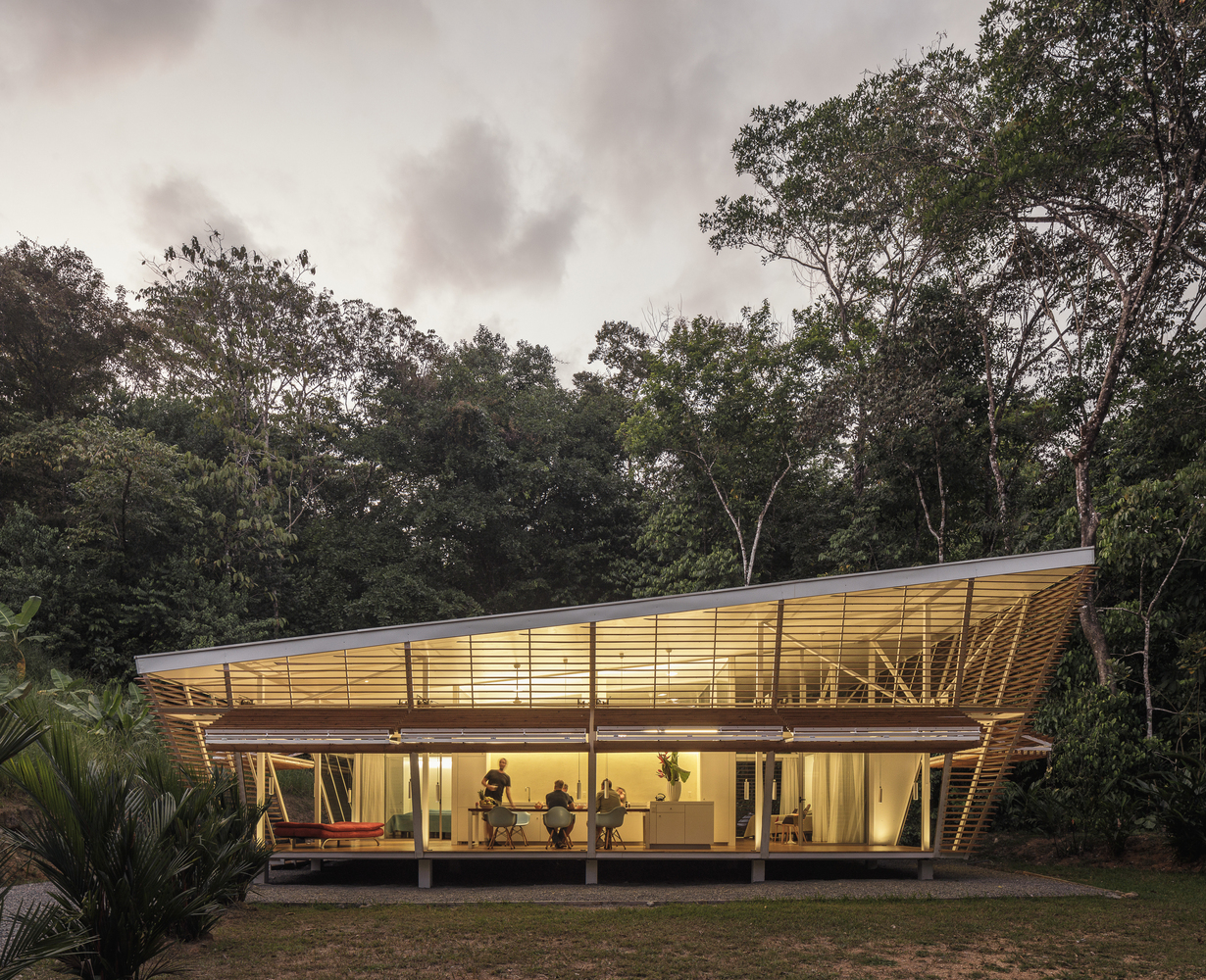"We are fascinated and grateful to the RUAS team for the wealth of ideas that were developed in a very short amount of time."
The No Footprint House (NFH) is based on a modular component system. The multi award-winning prototype of the project was built in the southwest of Costa Rica. Clients can choose from a broad range of building configurations and sustainable construction materials. This choice is influenced by personal taste and budget, as well as the site-specific characteristics. Different layers of the architectural design make it possible to adjust the buildingsystem according to the 14 micro-climatic zones in Costa Rica. Iterations of the NFH are currently being built in different parts of the country. At the same time, we were wondering how the building would adjust or how it would change according to other climatic zones in the world. With the idea of a global system in mind, a kind of “world house” for different climatic and cultural contexts, we got in touch with the Rotterdam University of Applied Sciences (RUAS) to discuss what a No Footprint House could be in the Netherlands. For whom would it be designed, who would live in it? How would it be built and materialized? How would the actual footprintbe defined?While the Costa Rican prototype was built in a rural environment, could there be an urban application to bring the NFH into the city? How does the concept respond to climate change and its potential impact in the Netherlands? Could this affect building legislation and norms for construction? Could the Dutch NFH decarbonize as much as its counterpart in the Tropics? And how would this be measured?
For the prototype in Costa Rica, we had done a Life Cycle Assessment (LCA), which was presented at the international UN conferences for climate change in 2019, the Pre-COP25 in Costa Rica and the COP25 in Spain. The LCA of the NFH showed how different strategies were designed and implemented to level the carbon footprint of the project in Costa Rica. Applying the same (or other) strategies in the Netherlands is a fascinating thought and welcome challenge in order to start growing a No Footprint Community globally. The results of the work with the RUAS students show how a global crisis -of climate- and limitations -of energy- can be turned into an inspiring process of co-creation. We are fascinated and grateful to the RUAS team for the wealth of ideas that were developed in a very short amount of time.
Oliver Schütte, Architect of the No Footprint House, co-founder and director of A-01 (A Company / A Foundation)







